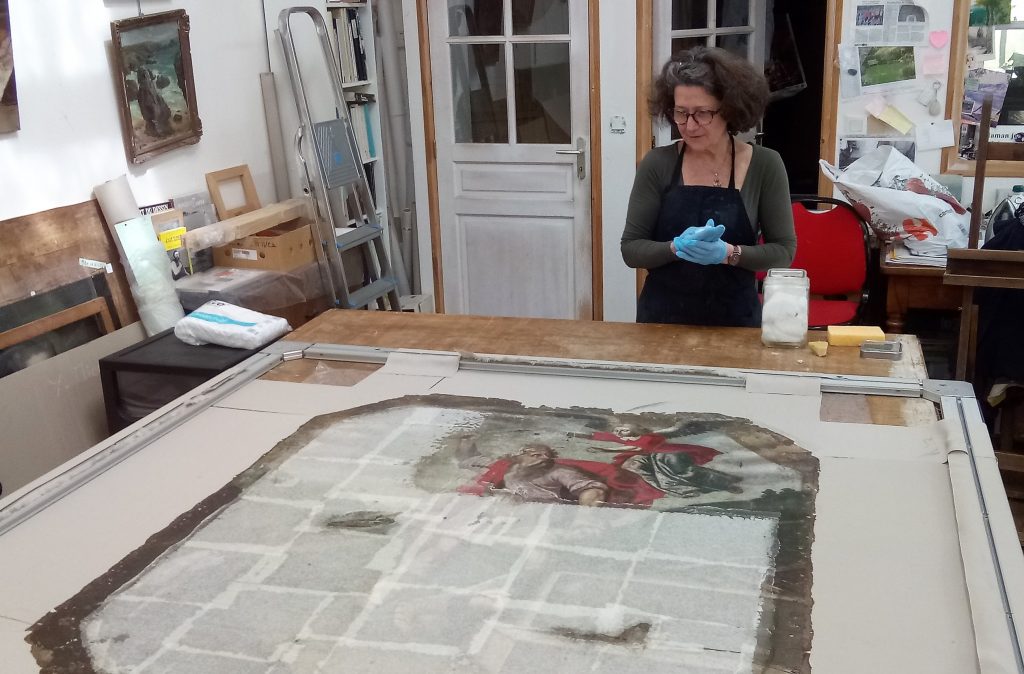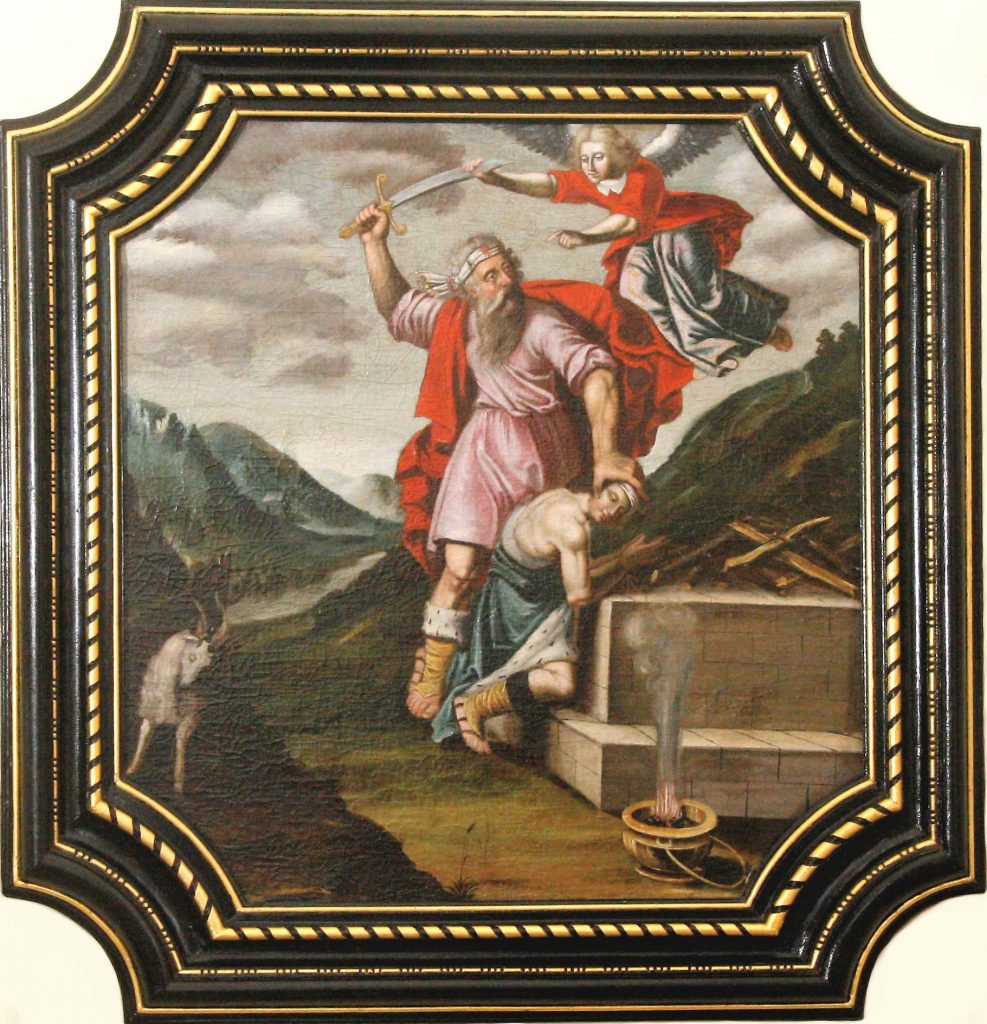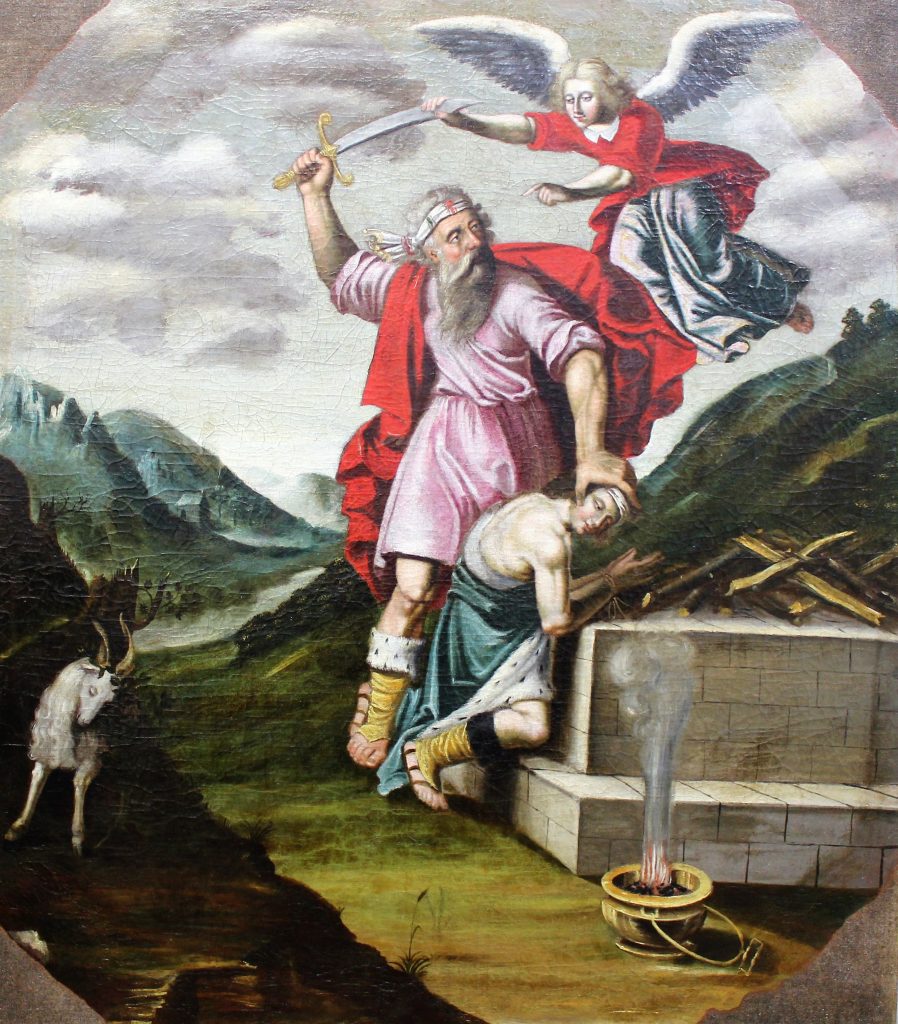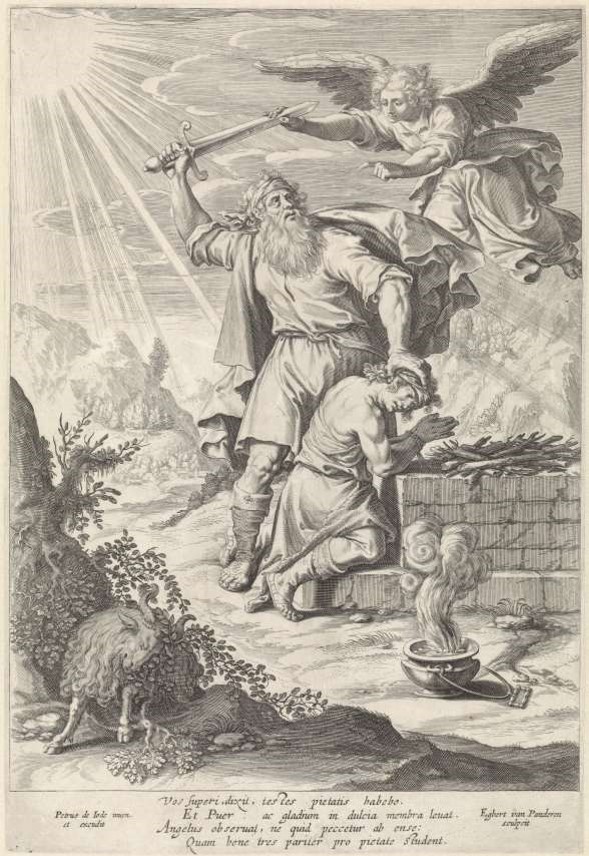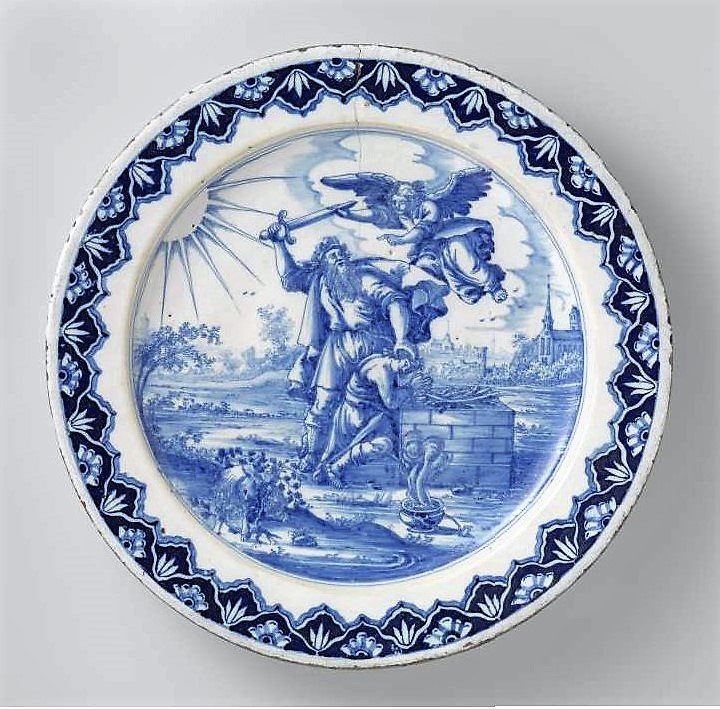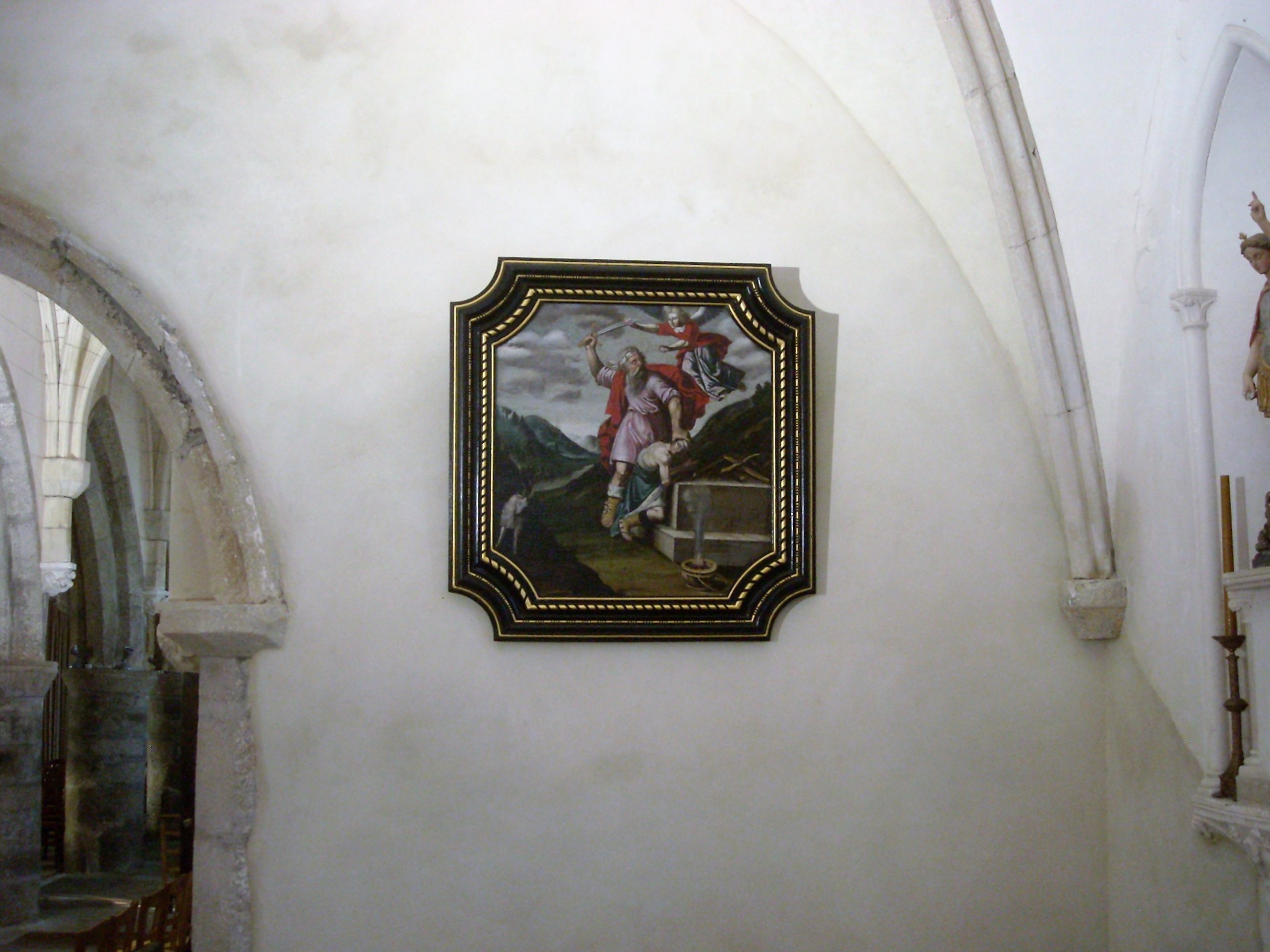Work still goes on at the Church, in Tocqueville. After the restoration of the statue of the Sacred Heart, at the top of the west pinion, followed by the installation of new lighting, the painting The Sacrifice of Abraham , classified as historical monument, has been back in the church on January 2020. It went throught a long “cure of youth” in Agnes Archimbaud’s workshop, restorer of paintings at Villedieu-les-Poêles.
This 17th century painting, whose author remains unknown, is inspired by an engraving by Egbert van Panderen, after Pieter de Jode (1590-1637). This engraving is visible at the Rijksmuseum in Amsterdam, as well as a Delft earthenware plate that represents the same scene. We do not know either how it arrives into the Tocqueville’s church.
It represents an episode from the Bible (Genesis 22) :
God says, “Take your son, your only one, the one you love, Isaac, go to the land of Moriah, and there you will offer him as a sacrifice on the mountain that I will tell you.” (…)
Abraham built the altar there and laid the wood; then he led his son Isaac and put him on the altar, over the wood. Abraham extended his hand and grabbed the knife to immolate his son.
But the angel of the Lord called him from heaven and said, “Abraham! Abraham!” He replied, “Here I am!” The angel said to him, “Don’t lay your hand on the boy! Don’t hurt him! Now, I know that you fear God: you have not refused your son to me, your only one. »
Abraham looked up and saw a ram held by the horns in a bush. He went to take the ram and offered it as a sacrifice instead of his son.
This restoration was led by the Regional Directorate of Cultural Affairs (RDCA), which contributed to its financing as well as the Manche Departmental Council.
Several elements suggest that the painting could have come from a 17th century altarpiece that had disappeared: its relatively small size, its iconographic theme referring to the Eucharistic sacrifice, the traces of changes in format detected during its restoration, the absence of a frame.
When it was created, the canvas was rectangular in size like the engraving. Following a modification, probably in the 19th century, it was directly nailed to the reverse of an octagonal frame, to which the painting has been “adapted” to the detriment of an important part of it which is hidden.
Restoration required a lot of operations: cleaning, consolidation of torn areas, filling gaps, retouching and protective varnish. In agreement with the RDCA, the canvas was attached to a chassis that was repositioned in the frame, also renovated, but which partly covers the painting. However, it will be possible, if necessary, by removing the frame, to see the painting as a whole.
This work is part of a whole program whose next steps are the restoration of the high altar with its altarpiece, its painting The Resurrection and its statues, as well as a study to combat the humidity of the walls of the church.
